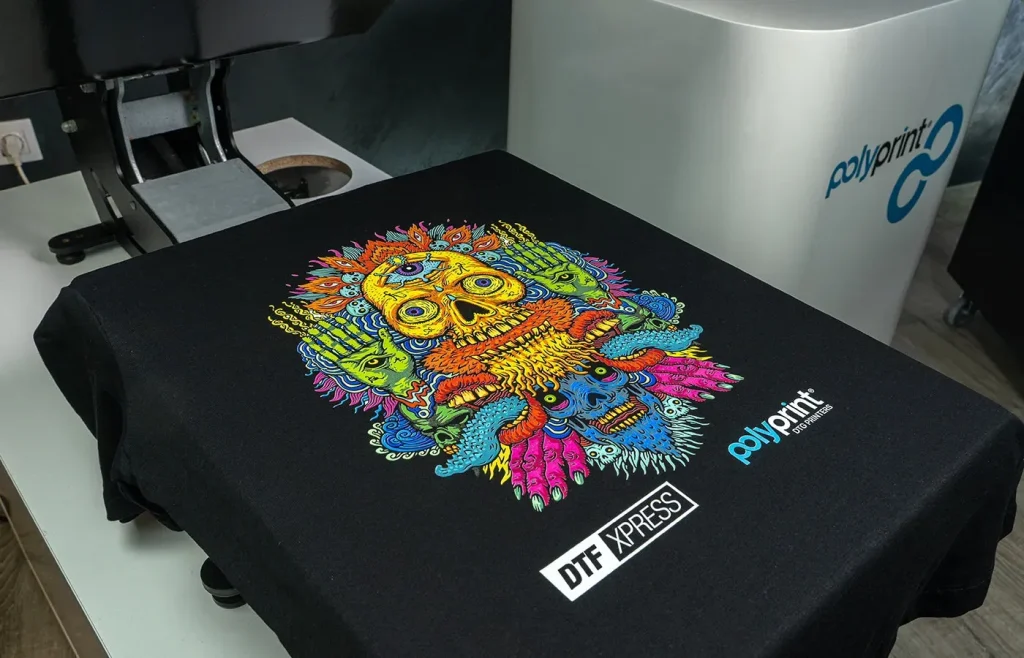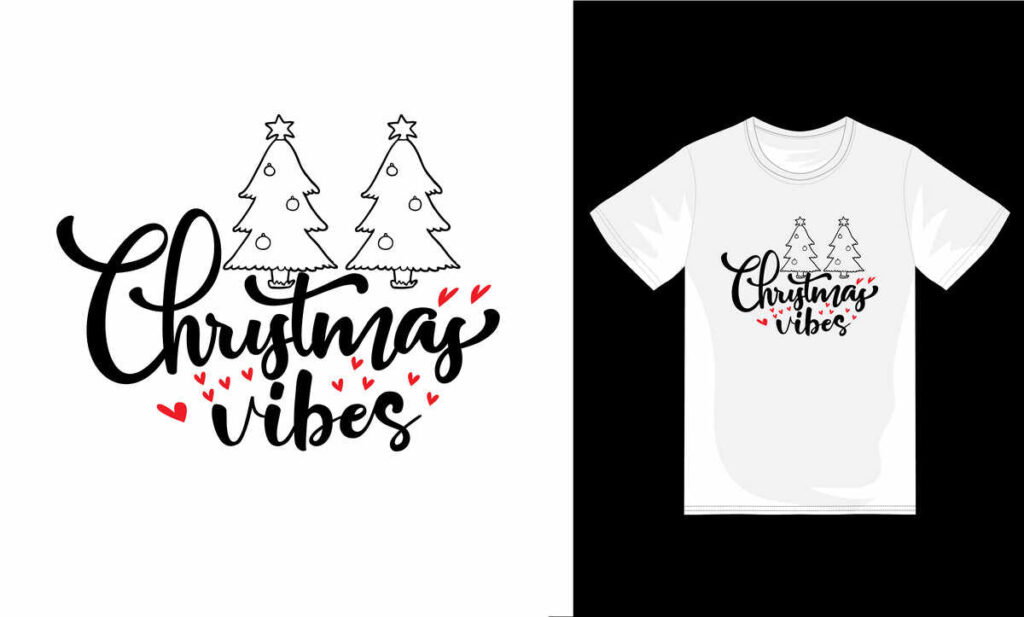In the ever-expanding realm of printing technologies, **DTF Printing** (Direct to Film Printing) stands out as a revolutionary method that is reshaping the landscape of custom garment printing. This innovative printing approach allows businesses to produce stunning and durable designs on a range of textiles, providing exceptional vibrancy and detail. As we delve into the advantages of DTF printing, it becomes clear why this technology is rapidly gaining traction in various applications, from fashion to promotional items. With the ability to transfer intricate designs with ease, DTF brings numerous benefits that can help brands captivate their audience and elevate their product offerings. Whether you’re a small business or a large enterprise, understanding the capabilities of DTF printing technology is crucial for staying ahead in this competitive market.
Known as Direct to Film printing, DTF printing utilizes an advanced technique that transfers designs directly onto specially coated films, making it ideal for various fabric types. This method offers diverse applications, extending beyond just clothing to include promotional items such as bags and phone cases. With its versatility and adaptability, this approach caters to businesses seeking cost-effective ways to meet market demands for personalized merchandise. As we unpack the benefits associated with this printing technology, we reveal how DTF can transform the way businesses approach custom printing, providing them with the edge necessary to thrive in a rapidly changing environment.
Understanding DTF Printing Technology
DTF Printing, or Direct to Film Printing, represents a innovative approach in the textile printing industry. This technique allows for intricate designs to be printed onto a special film before being transferred to fabric, ensuring vibrant colors and sharp details. Unlike traditional methods such as screen printing, DTF printing uncovers a plethora of possibilities, enabling artists and businesses to unleash their creativity without limitations. With the ability to print on numerous types of fabrics, including cotton and polyester blends, DTF printing paves the way for a diverse range of products.
The technology behind DTF printing combines advanced digital printing methods with heat transfer techniques. This process is straightforward yet effective, appealing to both seasoned printers and novices alike. By utilizing specialized inks and a unique adhesive powder, designs are transferred seamlessly onto garments. The continual advancements in DTF printing technology ensure that print quality remains exceptionally high and environmentally friendly, making it an ideal choice for brands aiming to stand out in today’s competitive marketplace.
The Advantages of DTF Printing for Businesses
DTF printing offers numerous advantages that are instrumental for businesses in the custom garment printing industry. One of the most significant benefits is its cost-effectiveness, particularly for low to medium production runs. The reduced need for extensive setup and the ability to print on-demand means businesses can operate with minimal waste, allowing them to allocate resources more efficiently. Furthermore, DTF printing eliminates the need for costly screens used in traditional methods, making it accessible to startups and small business owners.
Moreover, DTF printing shines in terms of versatility. It can print on various materials, ranging from apparel to promotional items, which means businesses can broaden their customer base and product offerings. The vibrant colors and high resolution achievable with this method also make it possible to attract more customers, especially those looking for unique, personalized items. By leveraging these advantages, businesses can enhance their market presence and appeal to a wider audience.
Popular Applications of DTF Printing
The applications of DTF printing extend far beyond traditional garment decoration. This flexible printing technique is increasingly being utilized in creating custom promotional merchandise, such as tote bags, caps, and even footwear. DTF printing is perfect for businesses looking to make a mark in the promotional products domain by offering uniquely branded items that stand out in a crowded market. Additionally, the process can also be applied to fabric items like home decor, allowing artisans to create customized prints for wall art and textiles.
Another booming application of DTF printing is in the production of personalized gifts. The demand for custom items is on the rise, with consumers seeking one-of-a-kind products for anniversaries, weddings, and holidays. DTF technology makes it easier than ever for individuals and small businesses to create customized designs as gifts, thus tapping into a lucrative market. With this adaptability, DTF printing continues to be a game-changer for diverse industries, underscoring its growing importance in the world of custom printing.
Environmentally Friendly Aspects of DTF Printing
As environmental concerns continue to grow, DTF printing has emerged as a more sustainable option compared to traditional printing methods. Many DTF printers now utilize water-based inks, which are less harmful to the environment than the solvent-based inks commonly used in screen printing. By minimizing hazardous waste and adopting eco-friendly practices, businesses can not only align themselves with consumer values but also comply with regulatory requirements that prioritize sustainability.
Additionally, the efficiency of DTF printing means less resource usage overall. The ability to print on-demand reduces the surplus of stock that often goes to waste in conventional printing. This approach not only saves materials but also minimizes energy consumption through streamlined production processes. As more brands prioritize environmental responsibility, adopting DTF printing could serve as a competitive advantage in the eco-conscious market.
Empowering New Businesses with DTF Printing
DTF printing is particularly empowering for new entrepreneurs stepping into the custom printing industry. Its straightforward workflow makes it easier for individuals with limited experience to launch their printing businesses. From printing stunning designs on films to executing heat transfers, the simplicity of the DTF process allows newcomers to focus on creativity rather than technical complexity. As a result, many aspiring printers find success quicker than with traditional methods.
Moreover, the availability of educational resources for DTF printing has dramatically increased. There are countless tutorials, webinars, and community forums dedicated to helping newcomers build their skills and troubleshoot challenges. With such support, new businesses can navigate the initial learning curve associated with printing technology and gain confidence in their abilities. This encouragement helps foster a vibrant community of innovative printer-entrepreneurs who are revolutionizing the market.
The Future of DTF Printing in Custom Apparel
As the demand for customizable apparel continues to surge, the future of DTF printing looks promising. Consumers increasingly seek personalized products that reflect their individual styles and preferences, setting the stage for innovative solutions within the printing industry. DTF printing’s ability to produce vibrant, high-quality prints on various textiles uniquely positions it to serve this growing market. Businesses that adopt this technology will likely find themselves capable of meeting consumer demands for unique and custom pieces.
Furthermore, ongoing advancements in DTF printing technology are expected to enhance production capabilities even further. As manufacturers continue focusing on improving print quality, speed, and the introduction of new materials, DTF printing can expand into unexplored applications and markets. Companies that recognize and adapt to these technological advancements will benefit from increased efficiency and customer satisfaction, driving their growth in the custom apparel landscape.
Frequently Asked Questions
What is DTF Printing and how does it work?
DTF Printing, or Direct to Film Printing, is a modern printing process where designs are printed onto a specialized film. This film is then transferred onto various fabrics using a heat press. The method allows for high-quality, vibrant prints on materials such as cotton, polyester, and blended fabrics.
What are the main advantages of DTF printing for custom garment printing?
DTF printing offers several advantages for custom garment printing, including versatility to print on a wide range of materials, vibrant color reproduction, cost-effectiveness for small and large runs, and ease of use, allowing even beginners to successfully operate the technology.
What types of garments can benefit from DTF printing applications?
DTF printing can be applied to a variety of garments, including T-shirts, hoodies, sportswear, and even bags. This printing technology is perfect for custom designs and allows businesses to cater to diverse customer needs with unique fabric options.
How does DTF printing compare with traditional printing methods?
DTF printing is often more efficient than traditional methods like screen printing, especially for small batches. It minimizes setup time and reduces waste by enabling on-demand production, which is cost-effective and versatile for businesses of all sizes.
What advancements in DTF printing technology are available?
Recent advancements in DTF printing technology include improved color accuracy, faster printing speeds, and the use of eco-friendly inks. These innovations enhance print quality and align with growing environmental considerations in the printing industry.
Where can I find resources to learn more about DTF printing techniques?
With the rising interest in DTF printing, numerous online resources such as comprehensive guides, tutorials, workshops, and webinars are available. These educational materials help users learn effective DTF printing techniques and troubleshoot common issues.
| Key Point | Details |
|---|---|
| Versatility | DTF printing works on a wide range of fabrics, including cotton, polyester, blends, and some synthetics, allowing customization for various products. |
| Color Vibrancy | Offers vibrant colors and sharp details, making it ideal for high-resolution images and complex designs. |
| Cost-Effectiveness | Economical for small batch runs with reduced waste and no extensive setup required. |
| Ease of Use | Simple process that includes designing, printing on DTF film, applying adhesive, and heat pressing, making it accessible for beginners. |
| Growing Trend | Advancements in technology improve quality and speed; expanding applications beyond garments to promotional items and home decor. |
| Market Outlook | Predicted market growth driven by demand for custom apparel and personalized products. |
| Educational Resources | Increase in online resources, workshops, and webinars to support new printers in mastering DTF technology. |
Summary
DTF Printing has revolutionized the custom printing landscape, offering unparalleled versatility and vibrant color reproduction. This innovative technique enables businesses to produce high-quality prints on a wide variety of fabrics, making it a top choice for those in the custom garment industry. As technology continues to advance, the cost-effectiveness and ease of use of DTF Printing further enhance its appeal for both small startups and large enterprises. With a promising future driven by market expansion and a growing demand for personalized products, DTF Printing is poised to redefine the way businesses approach custom printing, allowing for greater creativity and innovation.



